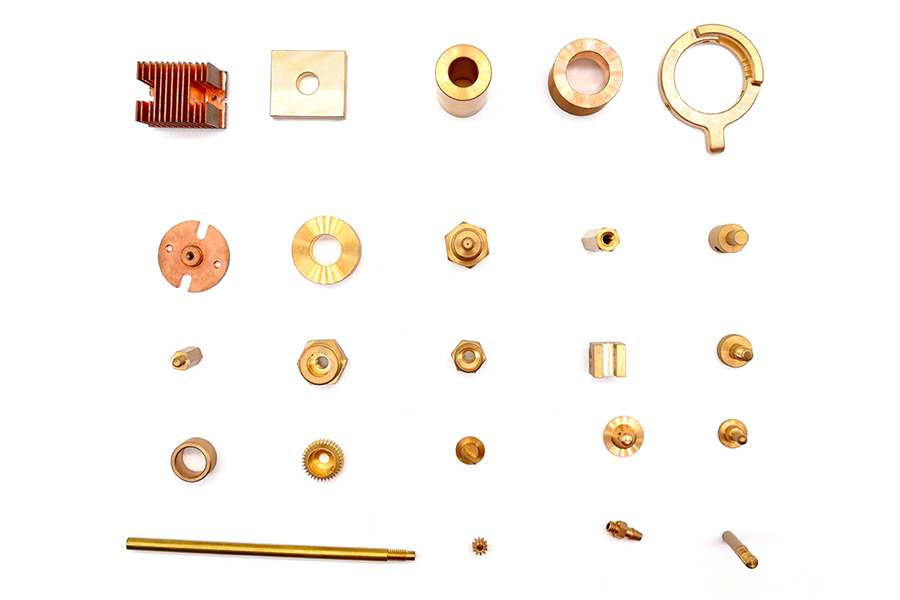Problems when machining thin-walled parts
(1) There are problems in the processing process
The CNC machining process of thin-walled parts requires that the thickness of the entire part does not exceed 1mm. Although the overall structure of thin-walled parts is relatively tight, the rigidity is poor and the strength cannot meet the actual production and processing requirements. In the actual machining process, the final effect cannot meet the actual design requirements due to the material itself. Therefore, improving the machining methods is necessary to ensure the processing effect.
(2) There are problems with the processing method
When clam the part, we need to make sure the part is clamped tightly, proper adjustment and optimization should be carried out effectively, and the management and rotation matrix should be controlled and optimized as comprehensively as possible. At the same time, since the clamp itself is affected by the spindle, only by ensuring that all the center of gravity control is concentrated on the top of the spindle can effectively ensure the full development of each work. Effective suspension depth control and selection for the actual state of the current part to ensure that the entire length meets current design requirements. At the same time, in the production process, it should also be ensured that the strength and hardness of the clips meet the current actual needs, so as to reduce the damage of the clips and ensure the long-term operation of all the clips as much as possible. However, in practice, the control of the tool is mainly concentrated in the CNC machining and cutting of thin-walled parts. Many operators do not select the entire cut angle, which ultimately results in an overall cut angle that does not meet current practical requirements to ensure that a given machining requirement requires only a small amount of effort, ultimately ensuring that the part can be effectively controlled on a variable basis.
2 Optimization CNC machining methods for thin-walled parts:
(1) Optimize the processing technology
Compared with the traditional processing technology, through the numerical control processing method of thin-walled parts, the technological design and processing adopted can greatly reduce the data error in the processing process, thereby effectively guaranteeing the actual quality of the current part products. Through a comprehensive analysis of the technical process related to NC machining of thin-walled parts, the method of NC machining of thin-walled parts at this stage is mainly transformed from rough machining to finishing machining. In the process of rough machining using numerical control technology, it is often necessary to analyze the actual situation of the current part, and then formulate the target processing method, which can not only improve the machining quality, but also reduce the loss. After the rough machining is completed, you can continue to use technical equipment for semi-finishing, mainly to propose the relevant materials on the surface of the part to effectively ensure the accuracy of the post-processing data. In the finishing process, to effectively implement finishing, accurate data analysis must be carried out, and processing management must be carried out through fine technical means. For example, machining and optimization can be performed by fine milling the outer circle, ultimately ensuring that the overall part of the part meets the current design requirements. The processing requirements of CNC machining of thin-walled parts are relatively high. In order to effectively improve the fine manufacturing of materials and reduce resource consumption as much as possible, in the process of CNC machining of thin-walled parts, the CNC deformation control should be done first, and it will become the current processing method and Processing parameters, effectively propose a scientific processing plan, and finally ensure that the deformation value is within the controllable range.
(2) Change the processing method
The processing method of CNC machining of thin-walled parts mainly includes three aspects: process design, part clamping tool control and so on. In the actual NC machining process of thin-walled parts, the analysis process of the NC policy should be effectively completed, the actual load capacity of the hardware in the actual machining process at this stage should be clarified, the relationship between the load sequence and deformation should be effectively analyzed, and finally targeted process design method. F=KU This is the formula for the main calculation process at present. F is the load array of CNC machined parts for thin-walled parts, and KU is the light matrix, which is the technical value of machining deformation. Through the comprehensive analysis between the three, it can be observed that when the value of the load array gradually decreases, the light matrix should be effectively adjusted, and finally the overall improvement of the quality of the part can be effectively guaranteed. And to strengthen the appropriate material strength, the value of KU should be adjusted and optimized in an all-round way, and finally the appropriate processing and production method should be selected.

